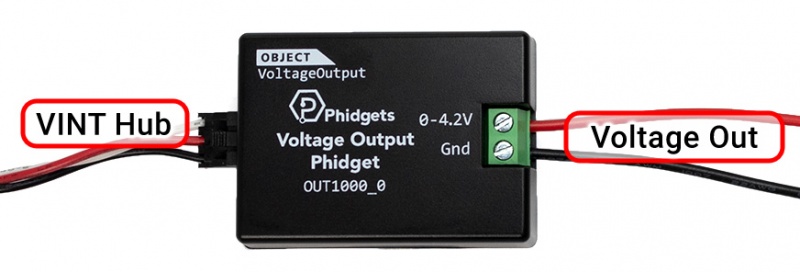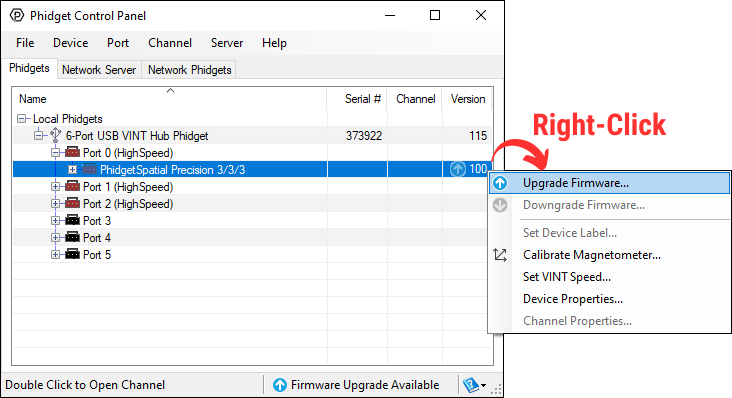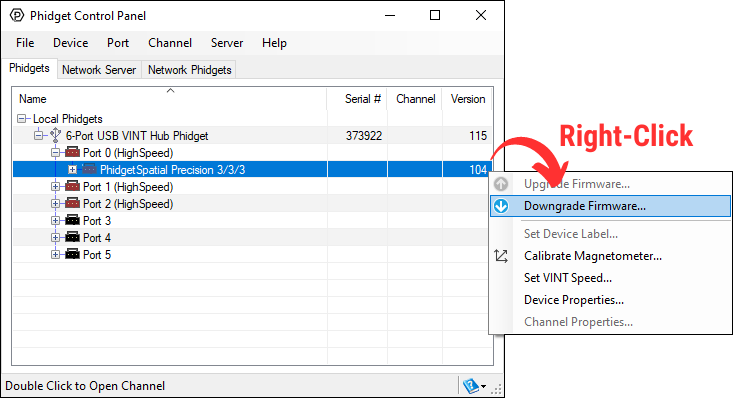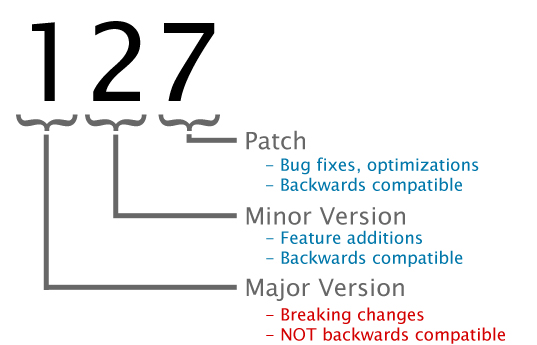Voltage Output Guide
A voltage output is a device that can generate an analog voltage. Learn more about voltage outputs in this guide.

Quantity Available: 570
| Qty | Price |
|---|---|
| 10 | $14.25 |
| 25 | $12.75 |
| 50 | $11.25 |
| 100 | $10.50 |
The OUT1000 outputs a DC voltage between 0 and 4.2 volts. This Phidget connects to your computer through a VINT Hub.
If the output voltage drops below the chosen setting (for example, when attached device draws too much current), a VoltageError event will fire so your program can respond appropriately.
This Phidget is a smart device that must be controlled by a VINT Hub. For more information about VINT, have a look at the VINT Overview page. You can use a Phidget Cable to simply and easily connect the two devices. Here's a list of all of the different VINT Hubs currently available:
| Product | Board Properties | |||
|---|---|---|---|---|
| Part Number | Price | Number of VINT Ports | VINT Communication Speed Max | Controlled By |
 VINT Hub Phidget
|
$40.00 | 6 | 1 Mbit/s | USB (Mini-USB) |
 1-Port VINT Hub Phidget
|
$26.00 | 1 | 1 Mbit/s | USB (USB-A) |
 VINT Hub Phidget
|
$35.00 | 6 | 1 Mbit/s | USB (Mini-USB) |
 Wireless VINT Hub
|
$60.00 | 6 | 100 kbit/s | Local Network (Ethernet or Wi-Fi) |
 PhidgetSBC4
|
$120.00 | 6 | 100 kbit/s | — |
Use a Phidget cable to connect this device to the hub. You can solder multiple cables together in order to make even longer Phidget cables, but you should be aware of the effects of having long wires in your system.
| Product | Physical Properties | |
|---|---|---|
| Part Number | Price | Cable Length |
 Phidget Cable 10cm
|
$1.50 | 100 mm |
 Phidget Cable 30cm
|
$1.75 | 300 mm |
 Phidget Cable 60cm
|
$2.00 | 600 mm |
 Phidget Cable 60cm
|
$2.00 | 600 mm |
 Phidget Cable 90cm
|
$2.00 | 900 mm |
 Phidget Cable 120cm
|
$2.25 | 1.2 m |
 Phidget Cable 150cm
|
$2.50 | 1.5 m |
 Phidget Cable 180cm
|
$2.75 | 1.8 m |
 Phidget Cable 350cm
|
$3.00 | 3.5 m |
 Phidget Cable Kit
|
$10.00 | 80 mm |
 Phidget Cable Extension Wire 22AWG
|
$0.75/Meter | — |

The OUT1000 can provide a DC voltage between 0 and 4.2 volts with a resolution of 1mV. This Phidget is ideal for analog voltage-controlled devices.
You can use your Control Panel to explore your Phidget's channels.
1. Open your Control Panel, and you will find the Voltage Output channel:

2. Double click on the channel to open an example program. This channel belongs to the Voltage Output channel class:
In your Control Panel, double click on "12-bit Voltage Output Phidget":

Before you open a Phidget channel in your program, you can set these properties to specify which channel to open. You can find this information through the Control Panel.
1. Open the Control Panel and double-click on the red map pin icon:

2. The Addressing Information window will open. Here you will find all the information you need to address your Phidget in your program.

See the Phidget22 API for your language to determine exact syntax for each property.
Firmware Upgrade
MacOS users can upgrade device firmware by double-clicking the device row in the Phidget Control Panel.
Linux users can upgrade via the phidget22admin tool (see included readme for instructions).
Windows users can upgrade the firmware for this device using the Phidget Control Panel as shown below.

Firmware Downgrade
Firmware upgrades include important bug fixes and performance improvements, but there are some situations where you may want to revert to an old version of the firmware (for instance, when an application you're using is compiled using an older version of phidget22 that doesn't recognize the new firmware).
MacOS and Linux users can downgrade using the phidget22admin tool in the terminal (see included readme for instructions).
Windows users can downgrade directly from the Phidget Control Panel if they have driver version 1.9.20220112 or newer:

Firmware Version Numbering Schema
Phidgets device firmware is represented by a 3-digit number. For firmware patch notes, see the device history section on the Specifications tab on your device's product page.

To ensure maximum voltage precision across the device's full range, the OUT1000 Phidget should be subjected to a minimal current draw, ideally less than 3mA. However, in the event you plan to power a small load with this device, it will either be sourcing or sinking current when in use. When it's connected to a circuit with a lower voltage potential than its own voltage setting, the current will be flowing out from the OUT1000 into the circuit, so it will be sourcing current. When it's connected to a circuit with a higher voltage potential than the voltage it's set to, the current will flow from the circuit into the OUT1000, meaning it will be sinking current.

The OUT1000 can source or sink up to 15mA of current depending on the selected output voltage. The chart below shows the maximum available voltage for a given expected current draw.

The OUT1000 may have an unpredictable output voltage for a very short time immediately after the device changes modes or is turned on. If this is a problem in your application, and you have no way to ignore it via software, we recommend using a solid-state relay to switch the output on once it has stabilized.
| Board Properties | |
|---|---|
| Controlled By | VINT |
| Driver Support | Phidget22 |
| VINT Communication Speed Max | 100 kbit/s |
| Electrical Properties | |
| Current Consumption Min | 15 μA |
| Current Consumption Max | load + 2.1 mA |
| Current Sourcing | varies* |
| Current Sinking | varies* |
| Voltage Outputs | |
| Number of Voltage Outputs | 1 |
| Voltage Output Max | 4.2 V DC |
| Output Voltage Resolution | (12-bit) 1 mV DC |
| Voltage Output Noise | ± 150 μV DC |
| Physical Properties | |
| Recommended Wire Size | 16 - 26 AWG |
| Operating Temperature Min | -40 °C |
| Operating Temperature Max | 85 °C |
| Customs Information | |
| Canadian HS Export Code | 8471.80.00 |
| American HTS Import Code | 8471.80.40.00 |
| Country of Origin | CN (China) |
* Current sourcing and sinking capability varies based on selected output voltage. Please visit the User Guide for details.
| Date | Board Revision | Device Version | Comment |
|---|---|---|---|
| June 2017 | 0 | 102 | Product Release |
| May 2019 | 0 | 110 | Added failsafe timer functionality |
| March 2022 | 0 | 121 | Failsafe timer now resets from any successful packet. Improved responsiveness. |
| Channel Name | API | Channel |
|---|---|---|
| Voltage Output | VoltageOutput | 0 |
| Product | Board Properties | Voltage Outputs | |
|---|---|---|---|
| Part Number | Price | Controlled By | Number of Voltage Outputs |
 PhidgetAnalog 4-Output
|
$85.00 | USB (Mini-USB) | 4 |
 Isolated 16-bit Voltage Output Phidget
|
$50.00 | VINT | 1 |
 Isolated 12-bit Voltage Output Phidget
|
$30.00 | VINT | 1 |
 12-bit Voltage Output Phidget
|
$15.00 | VINT | 1 |